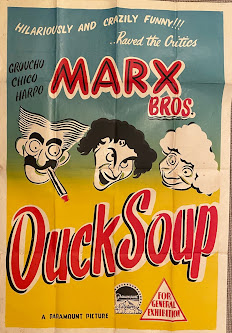By Dr. Greg Rabidoux, July 25, 2011, cross-posted from American Constitution Society's blog.
Speaking before a joint session of Congress on March 15, 1965, LBJ urged support for the Voting Rights Act (VRA). He implored all members to get behind it or risk being on the wrong side of history. He asserted that “Experience has clearly shown that the existing process of law cannot overcome systematic and ingenious discrimination. No law…can ensure the right to vote when local officials are determined to deny it.”
That was then, and Justice Clarence Thomas (among others) and his assertion that the time for the Voting Rights Act has indeed come and gone, is now.
But before we throw dirt on the VRA once and for all, a bit of context is in order.
With the current redistricting cycle full steam ahead, the VRA becomes controlling when plaintiffs seek to challenge newly drawn maps of legislative districts with sections (2) and (5) being invoked. Section 2 prohibits any “voting qualification or prerequisite to voting, or standard, practice or procedure” being imposed or applied to any State or political subdivision” that would “deny or abridge the right of any citizen of the United States to vote on account of race or color” while Section (5) requires a DOJ or US District Court of DC “pre-clearance” when seeking to administer any voting qualification, procedure, standard, practice or procedure “different from that in force or effect November 1, 1964.”
Ever since Allen v State Board of Elections (1969) the VRA (sections 2 and 5) have been the “go to” weapon in any savvy plaintiff’s arsenal to attack partisan maps that target minority representation and political voting power for dilution. But under the Roberts Court, those days may be fast coming to a halt.
Currently, there are two cases that especially merit our close watch. Shelby County, Alabama v Holder (2010) is challenging the constitutionality of section 5. They argue that the VRA is a relic of the past and its intent to “enforce the 15th Amendment by appropriate legislation” is as outdated as hula contests and hoop skirts.
LaRoque v Holder (2011) advances a similar assertion and was recently granted standing by the U.S. Court of Appeals for the District of Columbia Circuit to challenge the Department of Justice’s (DOJ) rejection of a local (Kinston, N.C.) initiative to remove party affiliation of candidates from the ballot. They argue that section 5 “denies (Plaintiff) equal, race-neutral treatment and an equal opportunity to political and electoral participation…by intentionally providing minority voters and their preferred candidates a preferential advantage in elections.”
And how will the U.S. Supreme Court rule on the matter if they so choose? Well, Chief Justice John Roberts Jr. may have already let, if, not the whole cat out of the bag, at least its tail.
In Northwest Austin Municipal Utility District 1 v Holder (2009) Roberts noted that section 5 broadly requires all changes at all levels to gain pre-clearance, a requirement that the Court seems to view as impermissibly intruding on state and local rights and responsibilities. Such an intrusion could be justified by sufficient federal interest in enforcing the 15th Amendment but again, as the Court put it, the Voting Rights Act itself now “raises serious constitutional questions,” questions, presumably, whose answers hinge on this Court’s assessment of whether discrimination like that practiced in 1964 still exists and consequently, the need for pre-clearance of changes like redistricting plans in those affected states.
And who might lead the charge to dismantle the VRA? Well, Justice Thomas’s dissent in the Texas Utility case is nothing if not plain. He writes “The extensive pattern of discrimination that led the Court to previously uphold (section 5) as enforcing the Fifteenth Amendment no longer exists...the lack of sufficient evidence that the covered jurisdictions currently engage in the type of discrimination that underlay the enactment (of section 5) undermines any basis for retaining it.”
Apparently, his message to groups currently fighting what they see as clearly discriminatory maps in states like Texas, North Carolina, Louisiana, and California, just to name a few, is “time to get off the bus.”
Of course, a law needs not be formally overturned without being crippled. Experts like Gerry Hebert make a sound point that just the fear, real or imagined, that the Court is less than committed to the VRA may already be a boon to its opponents. The DOJ pre-cleared redistricted maps in La. and N.C. despite adamant opposition from civil rights groups. And the U.S. Commission on Civil Rights points to a deep drop off of rejected plans by the DOJ since the Act was first enabled (5.5 percent to less than 0.1 percent).
The VRA, especially, section 5, may not be dead but it sure has seen better days. And that could mean one less weapon in the arsenal to fight clearly partisan maps that do wrong to minorities. Again.
Greg Rabidoux is an Assistant Professor at Austin Peay State University in Clarksville, Tennessee, and author of the book Hollywood Politicos, Then and Now: Who They Are, What They Want, Why It Matters (2009).
Thursday, July 28, 2011
Will The Roberts Court Kill The Voting Rights Act?
Tags
ACS
,
civil rights
,
Constitution
,
law and justice
,
SCOTUS
Subscribe to:
Post Comments
(
Atom
)






0 comments :
Post a Comment